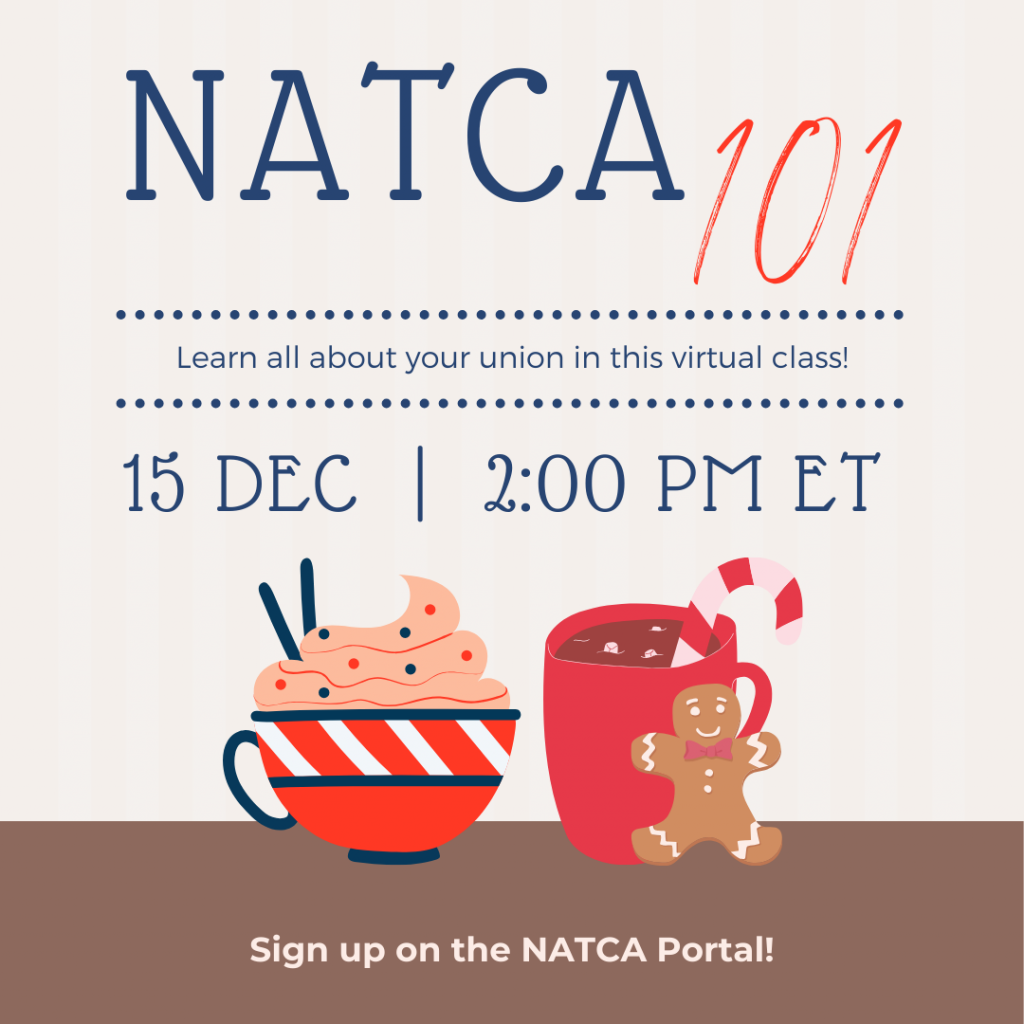
December 1st, 2024 New England Bi-Monthly Regional Update
From Steve Brown, NATCA New England Regional ARVP
Critical Incident Stress Management
From Jennifer Dickinson, NATCA CISM Coordinator, BOS
Happy Holidays! One of the things that I have been so thankful for after many years in this region is the camaraderie and the togetherness that I have felt. As we move into the holidays, I take comfort and am thankful in knowing how vested we are in caring for one another.
This time of year brings so much joy for many but for others, it can also bring feelings of sadness and difficulty. It is very important to take time and check in with one another. Rally around and check in with each other. Remember to take care of yourselves when you feel overloaded and know that you don’t have to be everything to everyone.
Self-care is one of the greatest gifts you can give yourselves and everyone around you will benefit from that also. Ask for help when you need it in every facet of your life for this is a strength. Sending so much love to you all and wishing you and your families a very happy and healthy holiday season!

Convention Update
Tim Roig, NATCA New England Constitution Rep, Y90

Our 20th Biennial Convention is this coming May 9-11, 2025 in San Francisco. The deadline for submitting amendments and resolutions is fast approaching. All proposals must be submitted by 11:59 p.m. EST on Thursday, January 9th, 2025 to [email protected].
I will be meeting with the rest of the Constitution Committee in Washington D.C. January 9-10 to review all submissions and make sure the intent of each proposal is clear. To get ahead of the game, if anyone in New England is planning on submitting an amendment or resolution please reach out to me before this date so I can help you and make sure your intent is clear.
Read more about the process for submitting amendments and resolutions here.

Training Update
From Karen MacCrate, NATCA New England Training Rep, ZBW

Happy Holidays NATCA New England! This time of year tends to slow down on traffic, but is filled with a lot of supplemental training such as Recurrent, Refresher, eLMS, etc. It’s important to keep training a priority as we strive to meet the NTI. There is an impediment “traffic not commensurate with level of training” that can be used when traffic is unusually slow due to a snowstorm, for example. It gets difficult with an hours guideline when traffic slows down and we want our training to remain beneficial and conducive towards certification. One of the ways we can do that is by utilizing Skill Improvement Training (SIT).
One of the ways we use SIT is to practice things we aren’t seeing with seasonal traffic such as sequencing, holding, and weather deviations. If you are finding traffic is not what you are needing, speak with your training team and have the Training Team Lead (OS) request SIT training.
Speaking of which, FAA Order 3120.4S became effective on August 28, 2024. There were some changes to Skill Enhancement Training (SET). The highlights are below.
All Skill Enhancement Training is under one umbrella which is now Skill Training (ST). There are now 4 types of Skill Training:
- Simulation Skill Training (SST): Specific to Stage Training simulation. It must be assigned by the TA following a score of less than 70 on a stage training evaluation scenario in accordance with appropriate Instructional Program Guides (IPGs).
- ATSAP Skill Enhancement Training (SET): Specific to training recommended by the Events Review Committee (ERC) as a result of one or more ATSAP submissions.
- Skill Improvement Training (SIT): Discussed above. SIT is used to reinforce skills for seldom-used AT operations or any job task/job subtask from the applicable OJT instruction/evaluation report. SIT is not used to correct a specific performance deficiency. OJT must not be paused during SIT.
- Skill Development Training (SDT): SDT may be assigned to a trainee for a position on which they are receiving OJT. The trainee’s supervisor must assign SDT when a repeated performance deficiency is identified and documented through review of the trainee’s PAs, applicable OJT instruction/evaluation report, Training Team meeting discussions, observed performance, or instructor recommendations. The Training Team must participate in development, delivery, and evaluation of SDT. Since the purpose of SDT is to focus on improving performance, OJT must be paused once the determination has been made to conduct SDT.
Both SIT and SDT are largely the same as in the previous FAA Order 3120.4R. They can be used for OJT and an employee certified on a position.
As always, if you have any questions or concerns, please feel free to contact me anytime [email protected]. Thank you all again for all of your hard work and I hope everyone has an amazing holiday season!
Upcoming Events
Some of the NATCA Academy classes have moved to locations to somewhere other than Las Vegas! Check out the graphic for more information!
To register for a 2025 NATCA Academy class, visit https://portal.natca.org/Default.aspx. Once you have logged in to the Portal, select “List of Events” from the Events menu tab. Then, select “NATCA Academy.”



